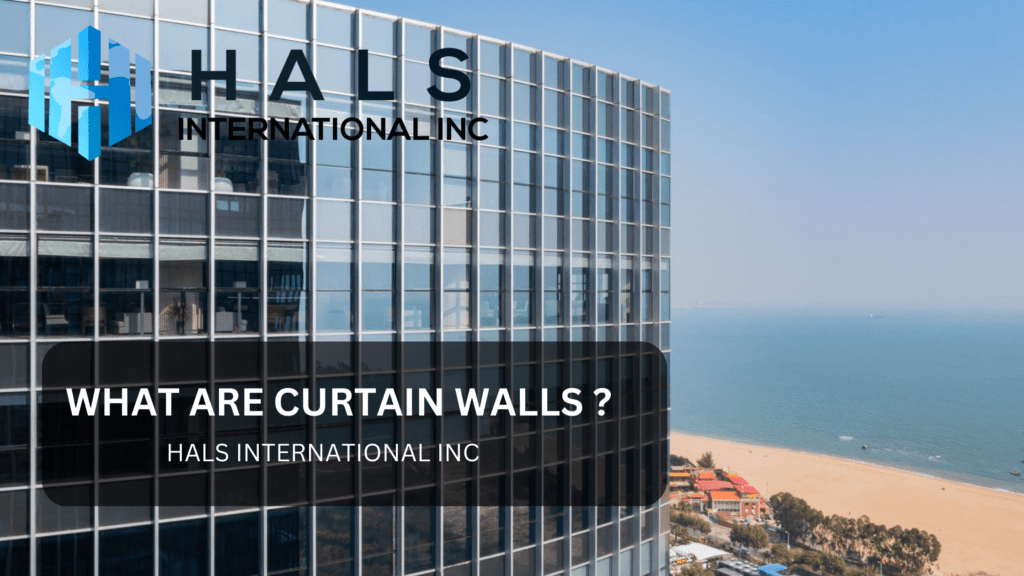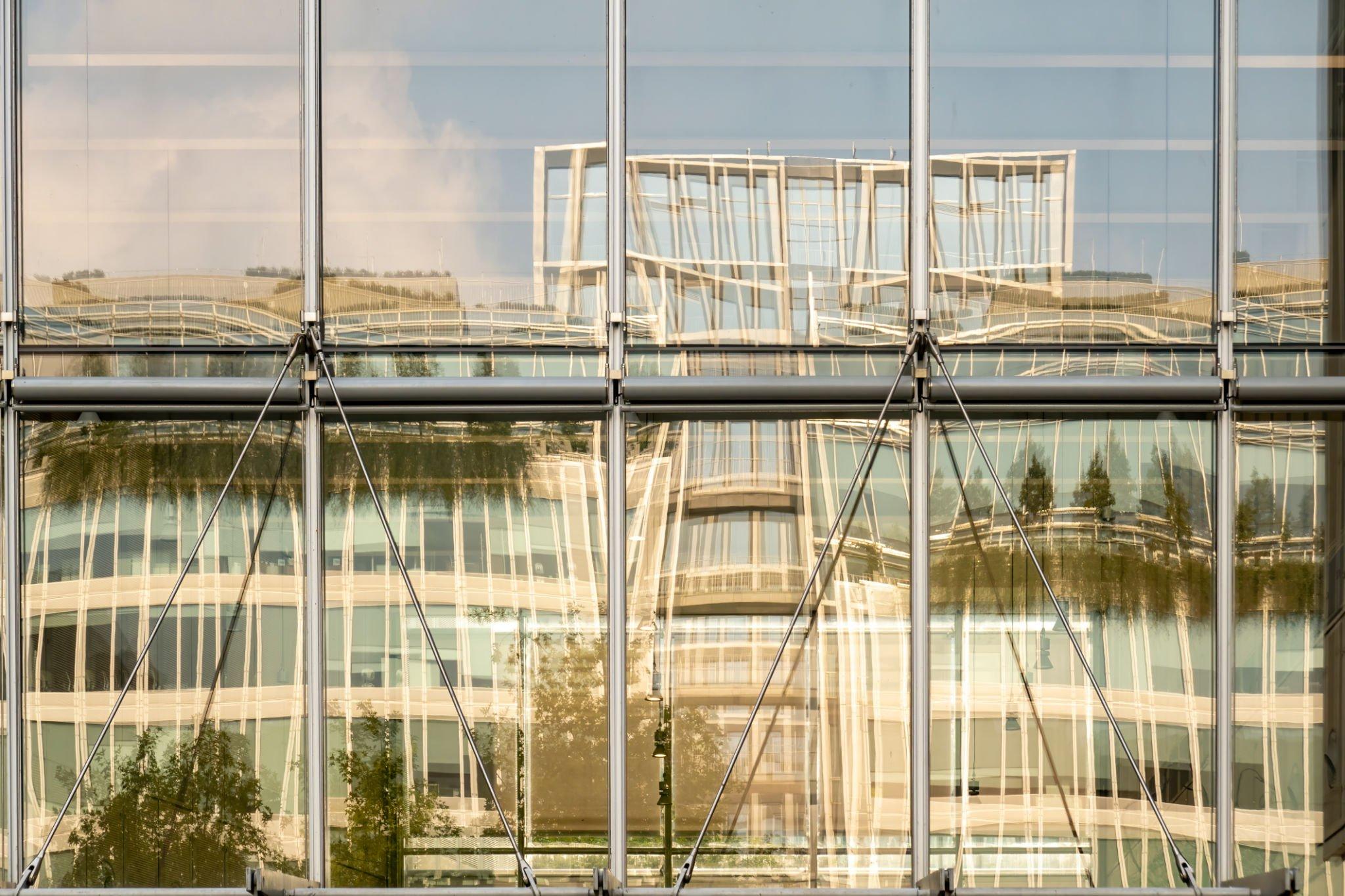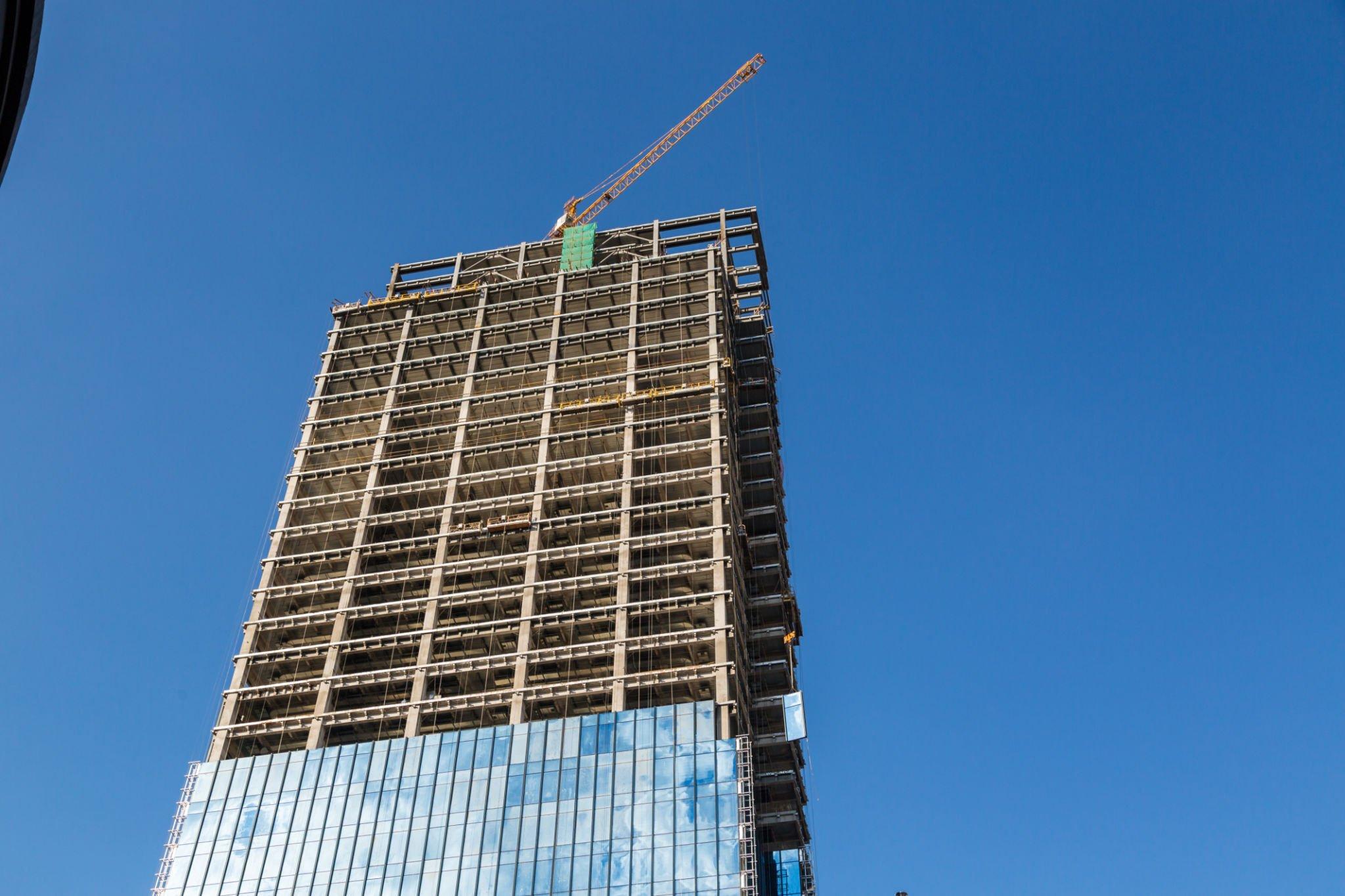
In the world of architecture and construction, innovation continues to push boundaries, giving rise to new techniques and materials. One such innovation that has revolutionized the industry is the curtain wall. Acting as both an exterior feature and a functional element, Curtain Walls have taken center stage in modern building design.
What Are Curtain Walls?
Curtain walls are the outer coverings of a building’s facade. They’re not meant to hold up the building’s weight, unlike load-bearing walls. Instead, curtain walls are designed to resist environmental forces, support their own weight, and add visual appeal to a building. They’re typically made of lightweight materials like glass, metal, or wood, and are often used in modern building designs.
Functionality And Purpose
The primary purpose of a curtain wall is to create a protective barrier between the building’s interior and the external environment. This barrier shields the interior from factors like weather, noise, and pollutants. Moreover, curtain walls are often comprised of glass panels, enabling natural light to flood the interior spaces, fostering an open and inviting atmosphere.
Related Products
Contact Us for Unique Products And Services
Curtain Walls In Commercial Projects
Hals International specializes in commercial curtain wall projects that convey professionalism, sophistication, and innovation. Our expertise in glass manufacturing and service provision ensures that our clients and visitors are left with a lasting impression. Whether it’s a sleek and modern office building or a luxury retail space, our curtain walls are designed to exceed expectations and elevate your brand identity. Trust us to deliver high-quality solutions that meet your unique needs and enhance your commercial property’s value.
Curtain Walls In Residential Projects
Curtain walls have transcended commercial spaces, finding a place in residential projects where they redefine modern living with their blend of aesthetics and functionality.
Benefits Of Curtain Walls

Curtain walls provide several benefits to buildings, including:
- Aesthetics: Curtain walls can give buildings a sleek, modern appearance popular with architects and building owners.
- Energy Efficiency: Curtain walls can help reduce a building’s energy consumption by providing insulation and reducing the need for artificial lighting.
- Natural Light: Curtain walls can allow natural light to enter a building, reducing the need for artificial lighting and providing a more pleasant work environment.
- Sound Insulation: Curtain walls can provide sound insulation, reducing the amount of noise that enters a building from outside.
- Weather Protection: Curtain walls protect a building from wind, rain, and other weather-related elements.
Modern Use Of Curtain Walls
Curtain walls are now used extensively in modern construction, particularly in commercial and high-rise buildings. Using lightweight materials such as aluminium and glass allows architects to design buildings with large, open spaces and extensive natural lighting.
The most significant development in modern curtain wall design is using unitized curtain wall systems. These systems are pre-fabricated in a factory and then assembled on-site, reducing the time and labour required for installation.
Unitized curtain walls also provide greater precision in construction and are less susceptible to errors and inconsistencies that can occur with traditional stick-built curtain walls.
Types Of Curtain Walls
There are several types of curtain walls available in the market. Each type has its unique features and benefits. These are some of the most popular types of curtain walls:
- Stick-built curtain walls: Stick-built curtain walls are constructed on-site, with each component assembled piece by piece.
- Unitized curtain walls: Unitized curtain walls are pre-fabricated in the factory and then transported to the site for installation.
- Structural glazing curtain walls: Structural glazing curtain walls are made of glass panels attached to the building’s structure using structural sealants.
- Point-supported glass curtain walls: Point-supported glass curtain walls use steel cables or rods to support the glass panels, providing a unique design aesthetic.
Materials Used In Curtain Walls
Curtain walls can be made from various materials, including glass, metal, stone, and composite materials. The choice of materials depends on the specific design requirements of the building and the desired aesthetic appearance. Some of the most commonly used materials include:
- Glass: Glass is a popular material for curtain walls because it provides a transparent and visually appealing façade. It is also energy-efficient and can help to reduce heating and cooling costs. So glass curtain wall is also a luxury choice to install on any building.
- Metal: Metal curtain walls are durable and long-lasting. They can be made from various metals, including aluminium, steel, and copper. Metal curtain walls can be painted or anodized to provide a variety of colours and finishes.
- Stone: Stone curtain walls offer a natural and timeless look to a building. They are also durable and long-lasting but can be more expensive than other materials.
- Composite materials: Composite materials, such as fibreglass and carbon fibre, are lightweight and robust. They can be used to create unique and visually stunning designs.
Installation Of Curtain Walls
Installing curtain walls is a complex process that requires careful planning and execution. The process typically involves the following steps:
- Design: The first step in the installation process is designing the curtain wall system. It consists in determining the specific design requirements of the building, selecting the appropriate materials, and creating detailed drawings and specifications.
- Fabrication: The curtain wall components are fabricated in a factory once the design is complete. It includes cutting and shaping the materials, assembling the elements, and adding any necessary finishes or coatings.
- Transportation: The pre-fabricated curtain wall components are then transported to the building site. It can involve shipping the parts by truck, rail, or sea.
- Installation: The final step in the process is the installation of the curtain wall components on the building façade. It involves attaching the parts to the building structure and sealing the joints to prevent water infiltration.

Curtain Walls vs Window Walls
Curtain walls find extensive use in commercial projects, where they contribute to the building’s identity and serve as a canvas for creative expressions. Window walls, on the other hand, are often chosen for residential projects, hospitality spaces, and areas where visual connection with nature is paramount.
Choosing Between Curtain Walls and Window Walls: The choice between curtain walls and window walls depends on factors such as architectural intent, location, and the desired interaction between the interior and the exterior. While curtain walls excel at creating iconic facades, window walls thrive in spaces that celebrate transparency and visual continuity.
Frequently Asked Questions
Curtain walls are highly versatile and can be adapted to various building types, including commercial and residential structures.
With proper maintenance, curtain walls can last for several decades, ensuring a durable and aesthetically pleasing facade.
Yes, curtain walls with insulated glass can significantly enhance a building’s energy efficiency, leading to potential energy savings.
When designed and installed correctly, curtain walls are not prone to leakage. Regular maintenance helps prevent any issues.
Conclusion
Curtain walls are an essential component of modern architecture, providing aesthetic and functional benefits to buildings. They have a rich history, and advances in materials and manufacturing processes have made them more affordable and easier to install. In modern construction, curtain walls are used extensively in commercial and high-rise buildings, providing natural light, energy efficiency, and weather protection, among other benefits.
For more such informational articles, you can visit HalsInternational and if you are looking for the best services and products then you can contact us to get a quote.
